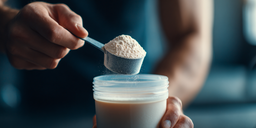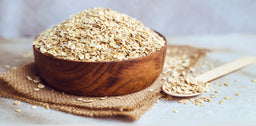
How Many Calories For Calisthenics?
Calculate your calorie intake for bodyweight training and calisthenics
How much should you eat if you mainly do bodyweight training and calisthenics in your home gym? Is there such a thing as the perfect calisthenics diet? Or should you go by the “calories in, calories out” equation?
Nutrition For Calisthenics
Calisthenics training is typically less concerned with building mass and size, and more focused on building a lean athletic physique which can perform well. But this doesn’t mean you should under-eat, or skimp on good nutrition. Protein intake will still be important (you do still want to build and maintain lean mass and bone density, right?) Carbohydrates and fats still have their place (for energy and health). But you may wish to keep a closer eye on bodyweight than a bodybuilder would.
Diet For Bodyweight Training vs Bodybuilding Training
Bodybuilding style training doesn’t require you to be light, after all you are not pulling or lifting your own body. Some people feel that muscle mass moves weights. And this may be true – but we are talking about calisthenics style training here, where the weights you are moving is your own body weight. Bodyweight training puts pressure through your joints, including your wrists, knees, and ankles. Strength to power ratio is important, and you won’t want to be any heavier than necessary.
Work Out How Many Calories For Your Goals
Calorie targets are always a best guess. There is no perfect formula or magic app that will tell you exactly how much to eat in order to lose body fat or stay lean. The best you can do it make an educated guess, track everything, assess your progress, and then adjust (up or down) from there.
Here are two good places to start.
The American College of Sports Medicine recommends the following formula (yes, you’ll need a calculator!)
Men:
RE = 662 – 9,53 * (age in years) + physical activity coefficient * [15,91 * (body weight in kilograms) + 539,6 * (height in meters)]
Women:
RE = 354 – 6.91 * (age in years) + physical activity coefficient * [9.36 * (body weight in kilograms) + 726 * (height in meters)]
What the “physical activity coefficient”?
1.25 = sedentary, just normal walking and household chores etc
1.5 = the above + 30-60 minutes of moderate activity
1.75 = the first option + 60 minutes moderate activity
2.2 = the first option + 60 min. of moderate physical activity + 60 min. of intense physical activity OR 120 min. moderate physical activity
The bodyweight x calories method
1-2 training sessions a week = your weight in lbs x 12 (this gives you your target calories)
2-4 training sessions a week = your weight in lbs x 14 (this gives you your target calories)
5+ training sessions a week = your weight in lbs x 16 (this gives you your target calories)
Best Foods For Pre & Post Calisthenics
One of the many benefits of a home gym is having easy access to your kitchen for pre and post workout snacks.
You might not need anything to eat before training, unless lunch was hours ago and you feel hungry. Many people like to do body weight training on an emptier stomach anyway, as it can help with balance and agility. If you need something, have some simple carbs that will be digested easily and avoid fats (which slow gastric emptying).
After training, have a main meal or a light snack consisting of protein (25g-35g), a serving of decent carbs (potato, rice, root vegetables, pasta), and a small amount of fats either from your choices of protein (oily fish, eggs) or from a simple fat source.
If timings mean you need a snack after training, then a meal in several hours, opt for protein and simple carbs. Cereal and a protein shake is quick and tasty, fruit and greek yoghurt is another way to combine protein and “quick” carbs.












































